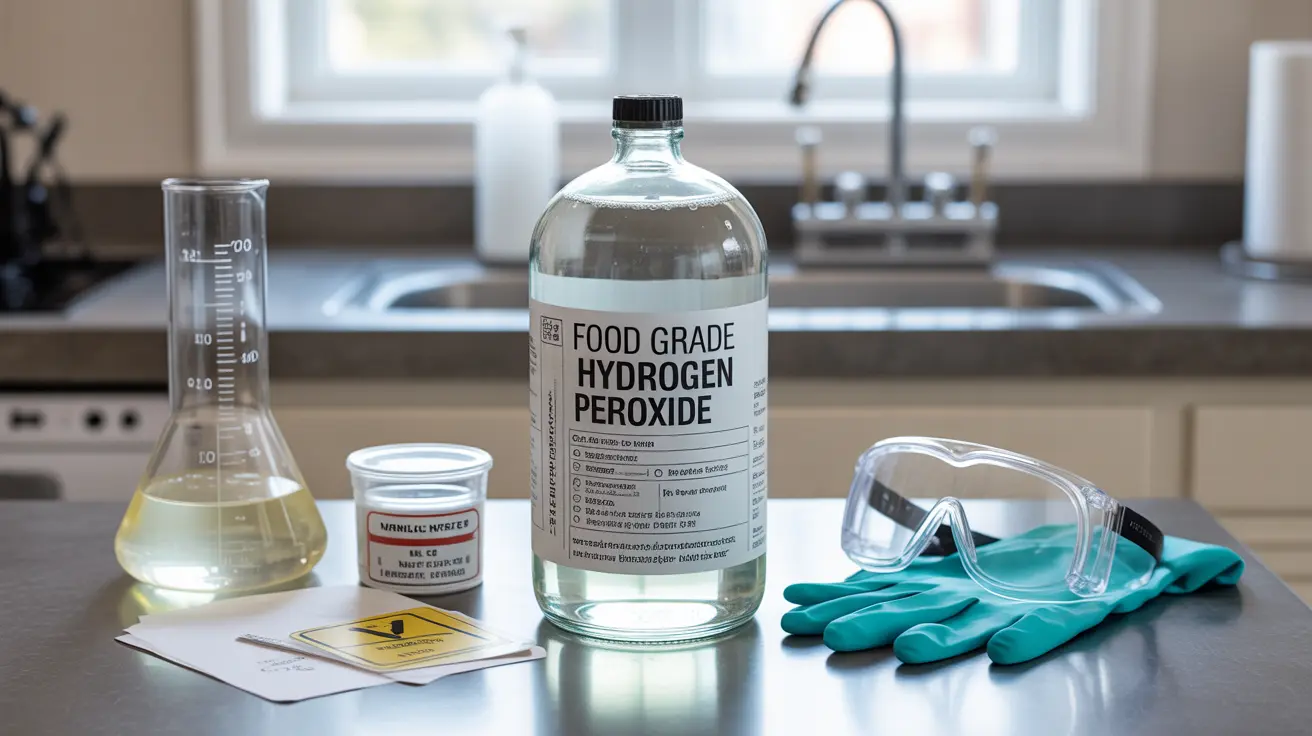Food grade hydrogen peroxide has gained attention for its potential uses in cleaning and disinfection, but it's crucial to understand both its applications and risks. This concentrated form of hydrogen peroxide requires careful handling and proper dilution to prevent serious harm.
In this comprehensive guide, we'll explore the safe ways to use food grade hydrogen peroxide, essential precautions, and important warnings about its application in various settings.
Understanding Food Grade Hydrogen Peroxide
Food grade hydrogen peroxide typically comes in a 35% concentration, which is significantly stronger than the 3% solution found in drugstores. This high concentration makes it potentially dangerous if not handled properly.
While it's marketed as "food grade," this term can be misleading. The concentration is not meant for direct consumption and requires substantial dilution before any approved use.
Safe Applications and Usage Guidelines
Cleaning and Disinfecting
When properly diluted, food grade hydrogen peroxide can be effective for:
- Surface sanitization
- Kitchen counter disinfection
- Bathroom cleaning
- Produce washing (with extreme dilution)
Always dilute the solution to 3% or less for cleaning purposes, and ensure proper ventilation when using it.
Proper Dilution Methods
Diluting food grade hydrogen peroxide requires precise measurements and careful handling:
- Use distilled water for dilution
- Measure accurately using proper equipment
- Store diluted solutions in dark bottles
- Label all containers clearly with contents and dilution ratio
Safety Precautions and Storage
Proper storage and handling of food grade hydrogen peroxide is critical for safety:
- Keep in original dark bottle or amber glass container
- Store in a cool, dark place away from direct sunlight
- Keep out of reach of children and pets
- Never store near flammable materials
- Use chemical-resistant gloves when handling
Health Risks and Warning Signs
Exposure to concentrated food grade hydrogen peroxide can cause serious health issues:
- Chemical burns to skin and mucous membranes
- Severe stomach irritation if ingested
- Respiratory problems if vapors are inhaled
- Vision damage if it contacts eyes
Medical Considerations
Despite claims about health benefits, food grade hydrogen peroxide is not approved for internal use or medical treatment. Any medical applications should be discussed with and supervised by healthcare professionals.
Frequently Asked Questions
What are the safe ways to use food grade hydrogen peroxide for cleaning and disinfecting at home?
Food grade hydrogen peroxide should be diluted to 3% or less for home cleaning. Use it on non-porous surfaces, ensure proper ventilation, and never mix with other cleaning products. Always test on a small area first and wear protective gloves.
Can food grade hydrogen peroxide be used for health treatments like sore throats or acne, and is it safe?
Food grade hydrogen peroxide is not recommended for health treatments or medical purposes. The FDA has not approved it for treating medical conditions. For sore throats or acne, consult a healthcare provider for safe, proven treatments.
What precautions should I take when handling or storing 35% food grade hydrogen peroxide?
Always wear chemical-resistant gloves, protective eyewear, and work in a well-ventilated area. Store in original dark bottles away from sunlight and heat. Keep away from children and never transfer to unmarked containers.
How do I properly dilute food grade hydrogen peroxide for washing vegetables or using in a vaporizer?
For vegetable washing, dilute to no more than 3% (1 part 35% hydrogen peroxide to 11 parts water). However, using standard produce washing methods is safer. Never use food grade hydrogen peroxide in vaporizers as this can be dangerous.
What are the risks and symptoms of exposure to undiluted food grade hydrogen peroxide on skin, eyes, or if ingested?
Exposure risks include severe chemical burns to skin and eyes, internal burns if swallowed, and respiratory damage if inhaled. Symptoms include burning sensation, pain, blistering, difficulty breathing, and severe stomach distress. Seek immediate medical attention if exposure occurs.




